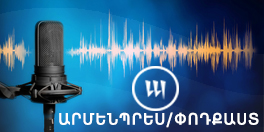Azerbaijan commits 167 ceasefire breaches at Armenia border and Artsakh LoC in one week
 17:17, 16 September 2019
17:17, 16 September 2019YEREVAN, SEPTEMBER 16, ARMENPRESS. Azerbaijani Armed Forces committed a total of 167 ceasefire violations at the Armenia-Azerbaijan border and the Artsakh-Azerbaijan Line of Contact from September 9 to 16, Armenian Armed Forces General Staff Administrative Body Information Department Chief Samvel Asatryan told ARMENPRESS.
He said that at the Armenia border Azerbaijan committed 55 ceasefire breaches by opening small arms gunfire, including from large caliber sniper rifles, at Armenian military positions stationed near the Berdavan, Barekamavan, Aygepar, Movses and Aygedzor settlements of Tavush Province, Vahan settlement of Gegharkunik Province, Yeraskh, Paruyr Sevak, Zangakatun settlements of Ararat province and the Chiva, Areni and Khndzorut settlements of Vayots Dzor province.
In Artsakh, Azerbaijan’s military breached the ceasefire at the Line of Contact 112 times, opening gunfire at the military positions of the Martakert, Shahumyan, Martuni, Askeran and Hadrut regions.
“The Armenian Armed Forces are confidently in control of the situation at the entire length of the border and are strictly adhering to the ceasefire and the situation and are taking appropriate actions only in the event of the adversary’s targeted violations,” Asatryan said.
The Nagorno Karabakh conflict (NK conflict) originated during the period of the formation of the three nation states in Transcaucasia – the republics of Armenia, Azerbaijan and Georgia – as a result of the collapse of the Russian Empire in 1917. The population of Nagorno Karabakh, 95% of whom were Armenians, convened their first Congress and declared Nagorno Karabakh to be an independent administrative-political entity, and subsequently a National Council and a Government were elected. From 1918 to 1920 Nagorno Karabakh had all attributes of statehood, including an army and lawful authorities.
However, in response to the peaceful initiatives of the Nagorno Karabakh people the Democratic Republic of Azerbaijan turned to military operations. From May 1918 to April 1920 the armed forces of Azerbaijan and Turkey – which supported the former – perpetrated violence and massacres against the Armenian population (in March 1920 nearly 40000 Armenians were massacred and displaced in Shushi alone). However, these actions did not force the Nagorno Karabakh people to accept the Azerbaijani authority.
Immediately after the establishment of Soviet orders in Armenia, on November 30th 1920, the Azerbaijani Revolutionary Committee recognized with a statement Nagorno Karabakh, Zangezur and Nakhijevan – territories which it previously was claiming, to be an inseparable part of Armenia.
Moreover, on June 12 1921 the Azerbaijani SSR’s National Council declared with a resolution Nagorno Karabakh to be an inseparable part of the Armenian SSR.
However, by ignoring the reality the Caucasus Bureau of the Russian Communist Party convened a plenary session on July 4 1921, where again the fact of Nagorno Karabakh being part of the Armenian SSR was confirmed. But, with Stalin’s direct interference, overnight July 5 the decision of the previous day is revised and an imposed decision on including the historically Armenian Artsakh (Karabakh) in Azerbaijan’s composition and forming an autonomous oblast in this area is adopted even without maintaining the procedure.
This decision is an unprecedented legal act in the history of international law, when a political party of a third country is deciding the status of Nagorno Karabakh without any lawful grounds or jurisdiction.
The conflict flared-up in 1988, followed by the mass pogroms of the Armenian populations of Sumgayt, Baku and Ganja, the cruel pressures of the Armenian population of Artsakh and the violations of the right to self-determination of the Armenians of Artsakh.
As a result of the 1991-1994 military operations unleashed by Azerbaijan, most part of the Artsakh (Nagorno Karabakh) Republic’s territory was liberated and came under the control of the Artsakh (Nagorno Karabakh) Republic’s Armed Forces.
However, a part of the territories of the Martakert, Martuni and Shahumyan regions, as well as the Artsvashen exclave are under Azerbaijani control up to this day.
On May 5, 1994 the Bishkek Protocol was signed between Azerbaijani Parliament, the Armenian Supreme Council and Artsakh’s representatives on a ceasefire starting from May 9 1994, which came into force May 12 1994. It is regularly being breached by Azerbaijan.
Currently negotiations are taking place under the auspices of the OSCE Minsk Group and at the Co-Chairmanship of Russia, France and the United States on settling the conflict peacefully.
Edited and translated by Stepan Kocharyan





















